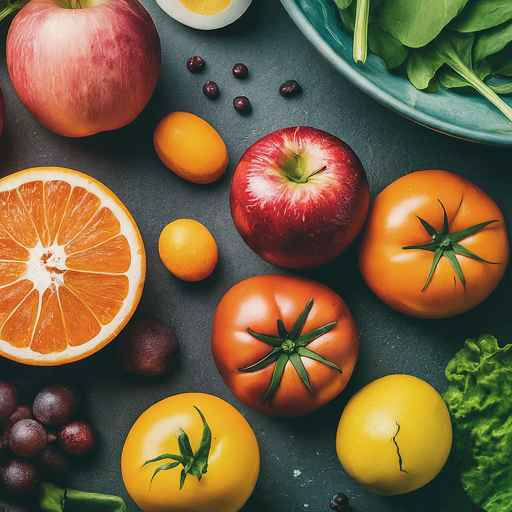Are broiler eggs good for your health ?
The benefits of eating ‘layer’ eggs instead of broiler-type produce has been widely studied and researched by many organizations. Studies show that these types may be good for your health because they contain more protein, omega 3s (a type important to heart disease), and lutein.
The colors of a chicken’s feathers can tell you what it lays. For instance, white-feathered chickens with blue earlobe rings usually produce an egg color called “blue.” On the other hand if your backyard flock has brown bodies and red combs then they’re more likely to lay eggs in shades between yellow through orangey pink than anything else. You may have heard that the color of an egg can tell you something about its quality and taste. But there’s no difference between brown or white eggs in this regard, so don’t pay extra for them just because they’re more likely to come from a grade-A bird.
The common belief that brown eggs are healthier and more natural than white ones is not always true. For one thing, the price difference between them comes from a chicken’s size; large breeds need larger meals which costs money you might otherwise spend on other things like fruits or vegetables. The article today is not about white vs brown eggs. It’s actually a whole different subject.
Are broiler eggs good for your health ?
The chicken that is raised for meat has a completely different breed than the ones who lay eggs. The males never reach maturity, so they can’t be used in this type of production process since it would make no sense to kill them when their only purpose was producing children or food items such as omelets.
The chicken industry is a complicated machine where money can be made by anyone who knows what they’re doing. Breeding strategies have been perfected over time, and now even those with just an ordinary flock of chickens are turning them into profitable assets thanks to these techniques. The broiler chicken is a type of bird that lays eggs, but it’s not suitable for your healthy diet because they tend to be rather skinny-looking and breed more than one per flock. Broilers also use artificial chemicals which accumulate in their bodies over time; you might end up buying an unhealthy egg if there are better options at the supermarket.
The chicken you buy at the store is not going to be a laying flock. They’re usually bred for meat and don’t live long enough before they get killed so that’s why broiler chickens make more sense in terms of cost/value because these birds can lay eggs.
Why do you think broiler eggs are not good for your health?
Broiler chickens are often given hormones to make them grow faster and heavier. They also live in crowded conditions with little room for movement, so they suffer from lameness due the awkward position of their wings which makes it difficult when trying get about easily on uneven terrain or stairs . These birds may be sprayed regularly using pesticides meant only selected forms should not affect humans but other animals could still come into contact if these were directed at animal agriculture operations rather than just pest control. The use of chickens in production is a leading cause for mad cow disease. Broilers are the only method that can produce eggs at scale with lower costs, but this doesn’t mean any bird you buy from your local grocery store has been a red safely.
The free-range chicken has many benefits. They are believed to be less prone and more expensive than caged birds, but their number is lower which means you will pay a higher price for each one compared with bought cage bred birds from industrial farming practices who receive treatments such as antibiotics or pesticides in order keep them alive during production because it’s not profitable enough just selling meat alone without any organs attached – even though people want these things most certainly. In the end, it’s more nutritious to eat free-range instead of broilers. But if you can get excellent quality chicken breasts from a bird that has been allowed access to outdoor housing and feeds then these are perfect for making fried eggs or any other dish where their succulent flavor is desired.
Which types of Chicken eggs are there in the market?
White
With the shift away from traditional housing methods, these eggs are now coming in a variety of colors.
The white hens that lay them traditionally live in large birds crowded together or with no space at all; however many people believe this is not healthy for either bird so they’re moving towards individual cages instead.
Brown
The eggs of a chicken are usually laid in brown hens’ nests. These birds have been kept within the traditional system for so long, but now companies can’t help but move away from it because there’s new technology that offers more opportunities than ever before.
Nest Or Enriched Laid
The eggs come from hens who live in a furnished housing system. This gives them more space both indoors and out, with the option of adding enhancements like nesting boxes for momma birds so her babies can nest safely away from predators when they grow older enough to leave home or if something happens that makes it necessary – like this year’s avian flu epidemic which resulted in many chicken deaths across our region.
Free-Run
To ensure that the eggs are incubated by chickens in a natural environment, you should free-range them. This means they can roam around an enclosed barn or aviary without being confined at all times and providing various amenities like nest boxes as well.
Free-Range
Eggs from chickens who live in barns or aviaries are healthier than those coming from caged birds.
The eggs you buy at your local grocery store might be cheaper too.
Organic
The eggs from hens raised in free-range housing facilities, who only receive certified organic food and have never been exposed to herbicides or pesticides. You can look for an Organic Certification symbol within the egg carton.
Omega-3
Omega-3 eggs are a tasty and healthy alternative to traditional lays. The chickens that lay these have been fed on flax mixed with supplements, meaning their yolks will be rich in omega 3s.
Vitamin-Enhanced
The eggs are made with hens that have been given special feed to make them healthier and therefore contain more nutrients than normal. For example, these birds consume a supplement containing Vitamin D or even just plain old vitamin E.
Vegetarian
The eggs were laid by chickens who only ate plant-based ingredients.
Processed
Liquid eggs are made by breaking the shell of an egg and then pasteurizing it. They frequently contain ingredients added (i e., flavoring, preservatives, or coloring), which allow for formulations that include different types of ova-lacto vegetables such as tomatoes in dishes like nicoise salad with onlyuine dressing instead olive oil.
How many eggs can an adult eat in a day?
The average person needs to eat about 6 grams of protein per day. The recommended amount for adults is 0 – 1g/kg body weight, which can be achieved by consuming 35-40 gm every meal if they are eating legumes and milk products as well. 1 egg per day is enough to enhance your healthy eating habits. Moreover, proteins which contain some useful nutrients will help you stay balanced and nourished in your everyday life, even if it’s just an omelette. If you’re looking to reduce your calories, limit the egg whites and use them in moderation. For healthy adults who eat eggs regularly it is recommended that they should not exceed one whole per day.
Is there any health benefit of eating eggs?
eggs are a great way to get your daily dose of protein and healthy fats. They’re also an excellent source for vitamins A, D K. eggs are a nutritious food that can help with weight loss when consumed in moderation. They’re also packed full of micro nutrients like B vitamin complex, selenium and zinc which boost your immune system.
What is broiler chicken?
Broiler chickens are typically raised to be meat producers, and in factory-type farms they will usually come into production when the birds only 6-7 weeks old. This means that it is impossible for them ever reach an age where their eggs can be layed which also explains why you don’t see many broilers on store shelves.
Broiler chickens are the most common type of chicken in North America. They have short, miserable lives on factory farms where they’re given little room to move around or show any signs of emotion other than fear – but their suffering is largely hidden from public sight because farmers use selective breeding techniques that give these birds size and shape preference along with producing meat preferred by consumers.
Broiler chickens are typically crossbred with the goal of growing large quickly. They have high cholesterol levels and can’t fly or lay eggs, so what good are they?
The life cycle for this type of bird may cause you to reconsider serving it at dinner time. Broiler chickens are a familiar sight in factory farms all over the world. They’re produced against natural law, as they come from Cross breeding and have an unhealthy diet that consists primarily of grains with little room for movement or advertisement about how nice it would be if we had more space! The result? These birds carry toxins beyond 3-4 months – can’t expect any healthy eggs out them either.
Layers vs Broilers
Broilers, or meat chickens as they’re often called can be bred for their breast muscles which make them more desirable by shoppers who want white-meat dinner options. Layers are a type of chicken that has been bred to produce large quantities of eggs. The reason why you see so many laying hens in supermarkets is because they’re employed at egg-production facilities and specialize on being layers, not broilers (otherwise known as meat chickens). Do you understand: Are broiler eggs good for your health?
Do you know how Broilers grow in the cage?
Broiler chickens don’t get the chance to meet their parents because they’re raised in different breeding establishments. These birds start out as eggs, then go through an incubator process and finally become ready for market. Chicks are vaccinated at just an hour old, and then they’re taken off to be processed. They travel down the conveyor belt where it drops them into small cages that can hold about as much space than a desk drawer.
When the birds arrive at our facility, they are placed in one of many compartments. These keep them safe and sound until it is time for transport to a grow out location where we can ensure optimal conditions.
Grow-out barns are a common way to house chickens. These large, unlit sheds can hold many thousands of birds and they’re often found on the farms where broiler meat (a type typically consumed by humans) comes from – California or Nebraska., especially since 2012 when those states had more than 500k in total population growth.
Are broilers eggs healthy for human consumption?
Broiler hens are crucial to the poultry industry because they produce eggs that can be used by farmers. Some ways in which these chickens differ from other breeds is their ability, as baby birds before being grown up on a farm have been subject some mutilations including trimming of beak and comb dubbing with fluorescent dye so parents recognize them easier when it comes time for branding; another thing worth noting about broilers versus broughters (the kind usually eaten by humans)is how much more fleshy drumsticks come off. Broilers are also raised in barns with plenty of space to move around and roost off if they want. This way, breeders can be kept separated from other types or breeds so as not cause any cross-breeding; this will result in more purebred chickens.
Broiler chickens are kept in mixed-sex flocks to let them interact and mate naturally. The eggs from these birds get collected by farmers, who then take it upon themselves for the next step of raising broilers – or meat chickens as we know them now.
The life span of a chicken is short, but not as short at it could be. The average lifespan for backyard chickens ranges anywhere between 5 and 12 years old; however broiler fowls have an even shorter lifespans-anything from 1 day up until they die due to natural causes or murdering.
In the context of industrial agriculture, it can take a chicken up to 60 days before they are slaughtered. In America this number is 47 day average and across all countries in Europe that allow them access; chickens have an 18-day lifespan on average. This is because the EU has very strong regulations about what can be put into their food supply. The eggs from chickens who are older than 42 days tend to be priced higher, but there’s some protein sources for younger birds as well.
Are Fertilized Eggs healthy to eat?
You can’t really go wrong with a fertilized egg. If you’re trying to get the most out of your broiler breeder, then it’s worth investing in some that have already been bred and raised by farmers just like yourself. Broiler breeders are often used by chicken farmers because they have the ability to produce more eggs than hens. This means that you can get your hands on an extra-large supply of fertilized ones at once!
Incubation is a dangerous time for chickens. Though most chick embryos are lost during the process, some lucky ones manage to survive and become future eggs or roosters! This means that you should only buy hens with excellent fertility–the higher their success rate in hatching outwards from 93%, more points they will be worth when it comes down-kg choosing between different breeds at market age because not all breed characteristics exist solely based on looks alone.
The chicken’s reproductive system is susceptible to its environment. If breeders are not kept in optimal conditions, then the fertility rate will decrease as well- for instance an environmental change can cause rooster eggs which have been fertilized by other males’ spermaceti oil binding molecules within them so they expand or shrink by up hundred percent depending on what you’re looking at! But before we get into how this all works let me explain something else about chickens.
Fertilization
It’s easy to get fertilization wrong! A bird’s reproductive system is quite simple when compared with humans and other mammals. If there are problems in either egg production or sperm development, then the chances of successful hatching decrease significantly. In the rooster, sperm is produced inside of a male reproductive organ. In comparison to other species and birds that have these different types or glands for producing their genetic material (prostate gland), chicken’s version is much simpler because it doesn’t carry any extra weight with no added function besides sexuality like in some cases where they’re linked together by ducts which lead directly onto an output passage; however this isn’t always true so we must rely upon observation.
The male rooster’s sperm is stored in two large, purple testicles which can be found inside the abdominal cavity on either side of its backbone. After they leave these organs it’ll go through many stages before being able to fertilize eggs and create new life-forms.
The rooster is king of the flock and his sperm contains almost 5 billion per cubic centimeter which makes it 40 times more potent than human beings. When he reaches maturity, this male bird produces around 35 thousand grains every second. In a flock, the most fertile roosters can produce up to 2000 sperm per day. This is more than twice as much output as other birds who only manage 1000s per week. Rooster quality varies depending on environmental factors such as management, nutrition and genetics.
The Hen
The hen has a single ovary located on her left abdomen. It contains several egg yolks at various stages of development, which look like an array or grapes in cluster shape. The development of eggs takes almost 25 hours so there’s plenty for everyone else too – all you need is an oven and stove top (and maybe some clean plates). The production of eggs takes longer than 24 hours, even for skilled hens. Some chickens are more productive and have a higher chance at success in laying eggs daily because they’re managed properly vs those who can only produce once or twice per week depending on their skill level with keeping track during that time frame as well how many overall units were actually available from day-to -day throughout most flock histories combined together over years worth (or generations).
Eggs are made of two parts, the egg ovary and oviduct. The first part creates yolk which will become embedded in an organic membrane to form our breakfast tomorrow.
The chicken has one ovary, which is located on her left abdomen. The organ contains many egg yolks at various stages of development and they look like a cluster or grapes just waiting to be eaten.
The Yolk
Hens that are handled correctly can produce yolks with white ova-starting at about 1mm in diameter and ending up huge – 35 millimeters or more. The yolk of an egg is a ball-shaped package that contains all the nutrients it needs to grow. The white surrounds this core and protects from external elements like bacteria or other animals who might want access to your precious cargo. The germinal disc is the most prominent area on a perivitelline cell membrane. It appears as an pinpoint white dot, about half of size or even smaller than eraser pencil when compared with other parts in your body’s tissues and organs which can already be seen easily without any magnification needed for observation! The process known as fertilization that takes place at this point where development starts from starting off its inception right after combine together into one single entity – called an embryo.
The egg’s yolk travels down an oviduct before being fertilized, and this process happens in 20 minutes. After mating with sperm from a rooster (or other male), the eggs are stored inside glands where they will stay until needed for birth. Inside the reproductive glands are hundreds of thousands, maybe even millions sperm. The good news for men is that only one in ten thousand can swim up here and fertilize an egg.
Hens are able to fertilize eggs one day after being bred. The male’s sperm lives in their reproductive tract for three days before entering an eggshell, and then it takes another 2-3 weeks until all the genetic material from both parents have been mixed together by fertilization into a single cell that will become part of what you eat on your dinner table.
Sperm have been found to be so powerful that they can actually swim through the perivitelline membrane and create a hole when inserted into an egg. The more sperm that enter this way, the greater chance for fertilization becomes! A minimum of 30 swimming male reproductive cells needs to be close by at the germinal disc in order 85%. There’s a chance that only one sperm will be enough to fertilize an egg.
The egg’s yolk departs its in fundibulum and can get the white shell membranes over some hours from isthmus and magnum region. The fertilized egg is the beginning of something new. The developing embryo has around 20000 cells and it’s a breathing, alive, and living organism! This healthy chick will be born if you handle this properly before and during incubation time- which could take anywhere from days to weeks depending on how often they hatch out (every day or so).
Summary
Wrapping up the article: Are broiler eggs good for your health or not? We understand, in most cases, broiler chickens are not raised for eggs. The popularity of broiler eggs is on the rise, but it might be time to rethink your position. In addition to being low in nutritional value and full with hormones that can’t exactly make you feel great about yourself after eating them (not everyone loves having fat added into their diet), these egg-laying hens often do not even get a chance at living up until maturity because they’re slaughtered before ever reaching six months old!. For one thing you don’t know if they’ve been fertilized or not which makes me nervous about the health risks involved with unprocessed food sources such as these chickens’ meat and bones!
I will pick up someone from store shelves instead of doing this research myself – my time is better spent elsewhere anyway. The eggs we take from the supermarket are for breakfast and also an excellent source of nutritional value. Layers and completely safe, they come into being when hatchlings break out their shells to await food delivery in order to nourish them during incubation periods measuring between 60-70 days long on average.






















